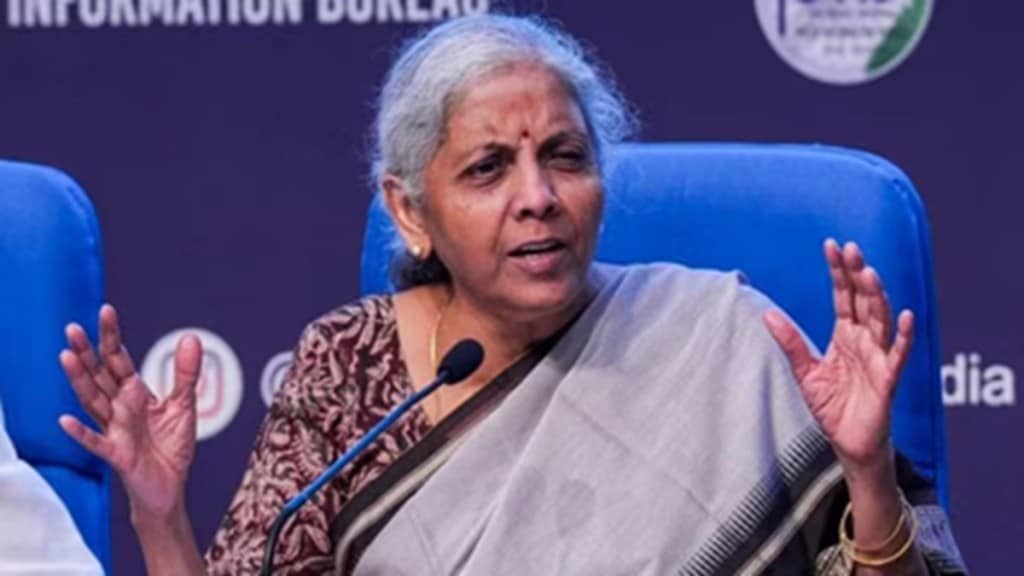Non-banking financial companies (NBFCs) should aim to more than double their credit disbursements to reach at least 50% of the total volume released by scheduled commercial banks, finance minister Nirmala Sitharaman said on Wednesday.
She said NBFCs should pass on to consumers the low costs of funds due to recent regulatory measures. Addressing an NBFC conclave here, she said the recent regulatory measures such as the restoration of risk weights on bank lending and the easing of financial conditions are expected to further improve credit prospects, strengthening the overall funding environment for the sector.
To achieve the goal of ‘Viksit Bharat’ by 2047, lending by both banks and NBFCs must expand. “NBFCs currently account for around 24% of the volume of credit disbursed by scheduled commercial banks. NBFC credit should aim to reach at least 50% of the total volume disbursed by scheduled commercial banks,” she said. By 2047, at least 50% of NBFC credit should be directed towards high-growth, high-impact sectors, she said.
“With the recent RBI measures reducing the costs of funds to the sector, (we) urge NBFCs to pass on the benefits of this reduction to customers,” she said.
The minister said the government remains committed to supporting the NBFC sector by enabling a responsive policy environment.
Gross loan advances by NBFCs have grown significantly, doubling from `24 lakh crore as of March 2021 to `48 lakh crore as of March 2025.
The NBFC ecosystem has over 9,000 registered entities, which range from large infrastructure lenders to niche players in microfinance and asset-backed lending.
Asset quality has shown steady recovery since the pandemic, with the NBFC sector’s gross NPAs having steadily declined from 6.4% in March 2021 to reach the level of 3% in March 2025.
Profitability has also improved with return on assets improving from 1.11% in March 2021 to 2.4% in March 2025.
She said NBFCs should not be aggressively market loans or push onto individuals. Interest rates should be reasonable, and all charges should be clearly disclosed in a simple and transparent manner, free from hidden costs or complicated terms.
Recovery practices must be conducted in a fair, empathetic and respectful manner, in strict accordance with the RBI’s fair practices code, she said.
She said NBFCs are no longer “shadow banks” — their stronger regulation and oversight is the best testimony of their importance in the financial system and the broader economy. Some systemically significant NBFCs have grown in size and complexity, with governance and compliance standards comparable to banks.

